|
|
|
|
OC-seislet: seislet transform construction with differential offset continuation |
We use a historic marine dataset from the Gulf of Mexico (Claerbout, 2000) to evaluate the proposed method for both noise attenuation and missing data interpolation problems. The input data are shown in Figure 14a. Near- and far- offset information is completely missing. After log-stretched NMO and Fourier transforms along time and midpoint axes convert the original data from time-midpoint-offset domain to frequency-wavenumber-offset domain, the OC-seislet transform compresses the predictable information according to the physical connection between different offsets. Unpredictable artifacts and reflections display different tendencies: artifacts disperse throughout the whole transform domain while reflections are compressed to a small scale range (Figure 14b). If we choose the significant coefficients using soft-thresholding, the inverse processing steps (including the inverse OC-seislet transform, the inverse FFTs both in time and midpoint axes, and the inverse log-stretch NMO) effectively remove incoherent artifacts from the data (Figure 15a). The difference between input data (Figure 14a) and denoised result (Figure 15a) is shown in Figure 15b. Most coherent events including reflections and diffractions are well protected by the proposed method thanks to the ability of the offset-continuation operator to predict structurally complex wavefields. However, some energy of the events is partly missing. To achieve a better result, one may need to use a more accurate NMO velocity. Thus, denoising is a naturally defined operation in the OC-seislet domain. The soft-thresholding techniques eliminate only part of spatial aliasing because of sparse offset sampling. Additional offset interpolation can further remove spatial aliasing.

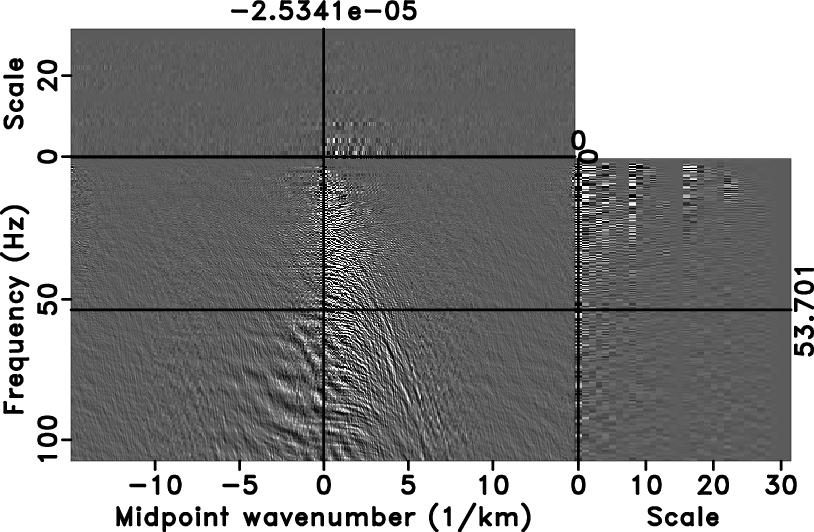
|
|---|
|
bei,bei-tran
Figure 13. Marine data in |
|
|
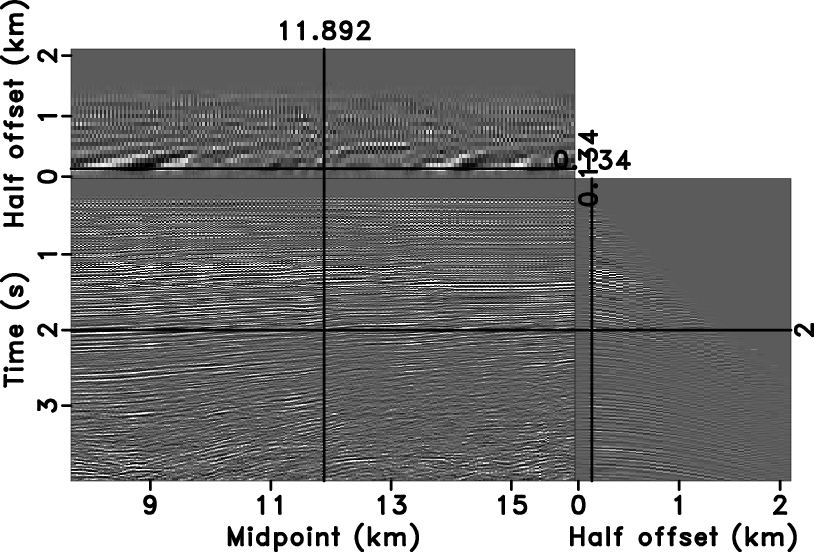

|
|---|
|
bei-denoise,bei-diff
Figure 14. Denoised result in |
|
|
For a data regularization test, we removed 70% of randomly selected traces from the input data (Figure 16). After applying the OC-seislet transform and iterative soft-thresholding, spatial artifacts and offset discontinuity in the transform domain coming from missing traces get attenuated. The interpolated result is shown in Figure 17b. Missing traces have been interpolated well even where diffractions are present. For comparison, we applied 3-D Fourier transform with iterative soft-thresholding, as proposed by Abma and Kabir (2006). The same parameters of soft-thresholding for those in the OC-seislet transform were used. The final result is shown in Figure 17a. The Fourier transform fails to recover the missing information as accurately as the OC-seislet transform. Fundamentally, the Fourier coefficients are simply not sparse enough for this dataset. Figure 18 shows the comparison after DMO stacking. The result from 3-D Fourier transform displays obvious gaps which are caused by inperfect interpolation (Figure 18a), while the OC-seislet transform and iterative soft-thresholding strategy provide a reasonably accurate result (Figure 18b).
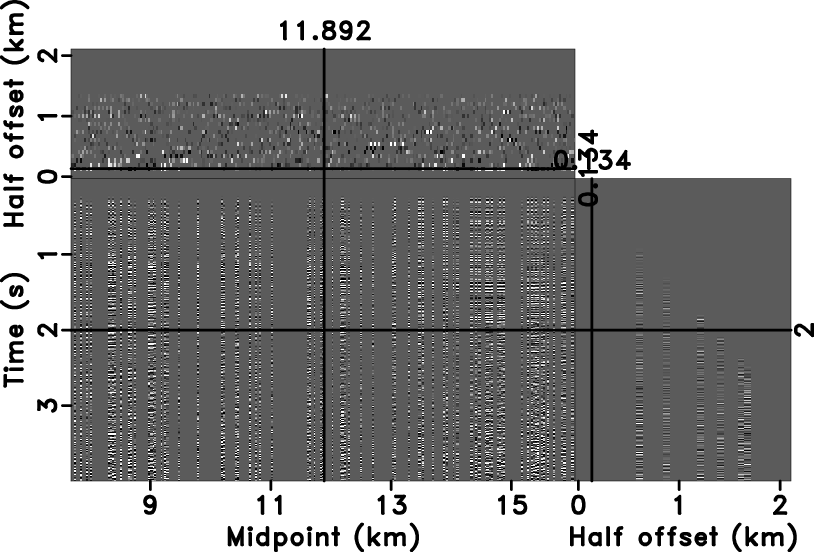
|
|---|
|
bei-zero
Figure 15. Marine data with 70% traces removed. |
|
|
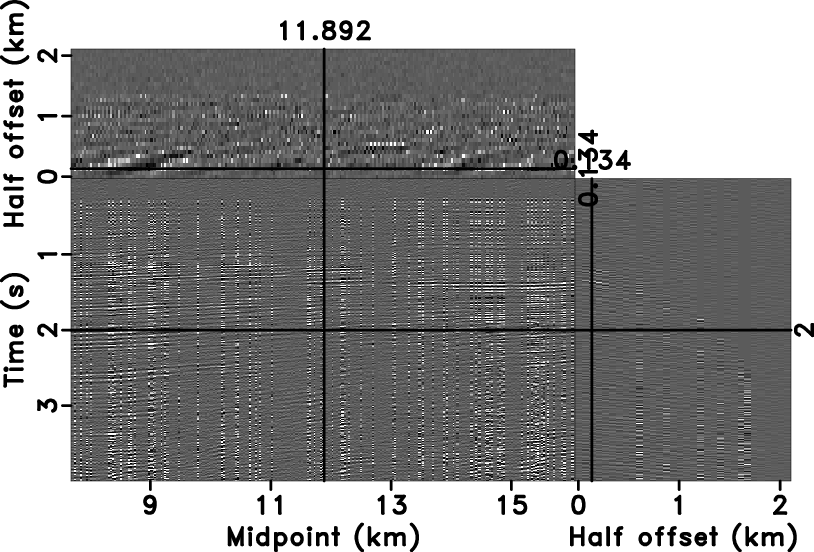
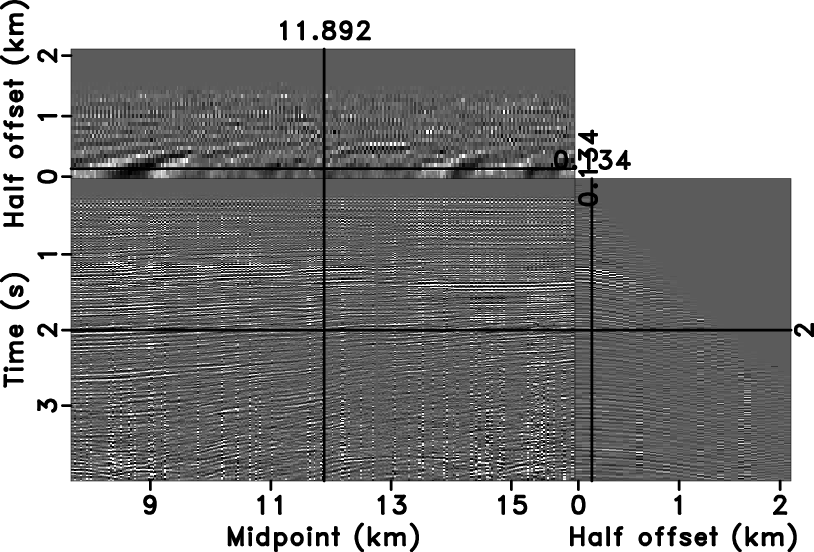
|
|---|
|
bfour3pocs,bei-pocs
Figure 16. Interpolated results using iterative thresholding with different transforms. 3-D Fourier transform (a) and OC-seislet transform (b). |
|
|

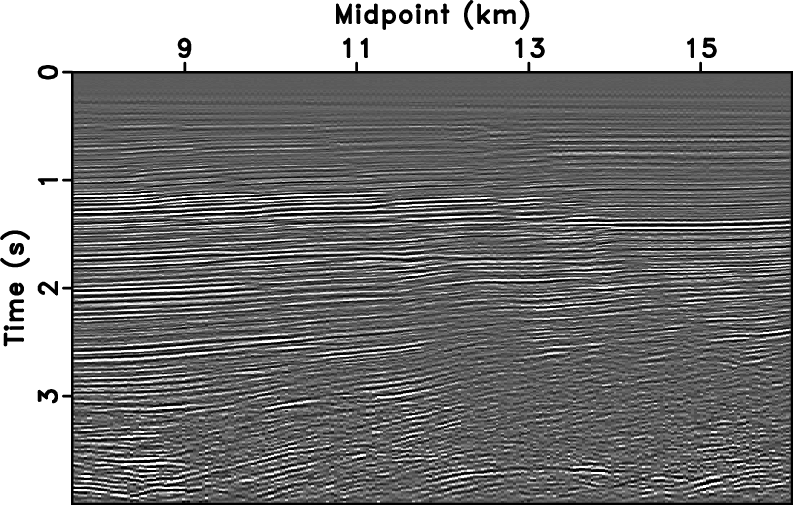
|
|---|
|
fdmos,dmos
Figure 17. Stacking of interpolated results corresponding to Figure 17. 3-D Fourier transform (a) and OC-seislet transform (b). |
|
|
|
|
|
|
OC-seislet: seislet transform construction with differential offset continuation |